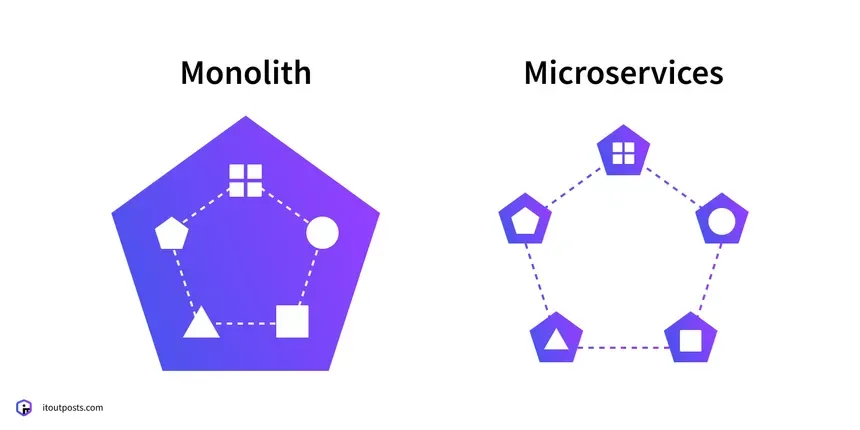Differences Between Monolithic and Microservice Architectures

In software development, choosing the right architecture greatly influences how an application is built, deployed, and maintained over time. Two common approaches that are often compared are monolithic architecture and microservice architecture. Each has its own advantages and disadvantages, depending on the application’s needs and the organization’s scale.
1. What is Monolithic Architecture?
Monolithic architecture is a traditional approach where all application components — such as the user interface (UI), business logic, and data access — are built as a single unit (one codebase and one executable file). This means the entire application runs as a single process.
Advantages:
- Easier to develop and deploy in the early stages.
- Suitable for small applications and small development teams.
- No need for complex service management.
Disadvantages:
- Difficult to scale individual parts; if one component needs more resources, the entire application must be scaled.
- Small changes can affect the entire system, making testing and deployment riskier.
- Hard to manage in large teams due to development conflicts.
2. What is Microservice Architecture?
Microservice architecture divides an application into smaller, independent services. Each service is responsible for a specific function — for example, user service, payment service, and so on — and can be developed, deployed, and scaled independently.
Advantages:
- High scalability, as each service can be scaled separately.
- Teams can work in parallel on different services without conflict.
- Changes to one service don’t directly affect others.
Disadvantages:
- Higher complexity in terms of communication between services, usually requiring APIs or message brokers.
- Deployment and monitoring are more complex.
- Requires careful service versioning and integration management.
3. When to Use Monolithic or Microservice?
- Use monolithic architecture if you’re building a small application or MVP (Minimum Viable Product) and want to launch quickly.
- Use microservices if you’re developing a large-scale application that requires high scalability, or if your team is large and distributed.
Conclusion
The choice between monolithic and microservice architecture depends on the complexity of the application, team size, and business needs. Neither approach is absolutely better — both can complement each other when used appropriately.

